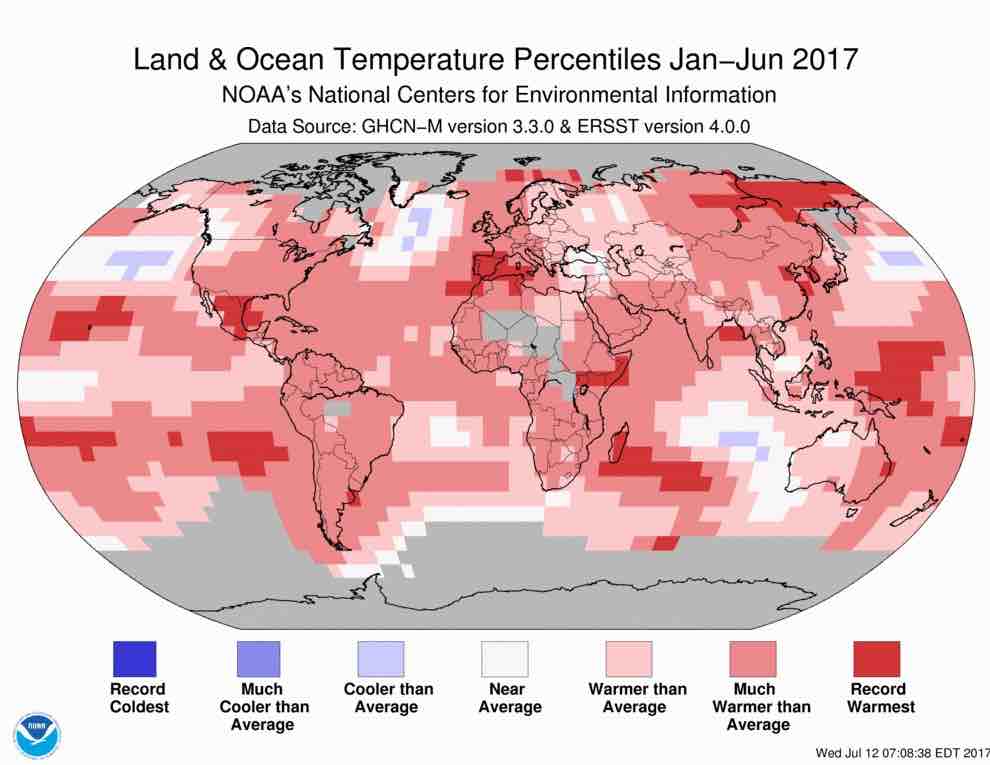
Normally, the hottest years on record occur when the underlying human-caused global warming trend gets a temporary boost from an El Niño’s enhanced warming in the tropical Pacific.
So it’s been a surprise to climate scientists that 2017 has been so remarkably warm — because the last El Niño ended a year ago.
The National Oceanic and Atmospheric Administration (NOAA) reported Tuesday that the first half of 2017 was the second-warmest January-June on record for Earth, topped only by 2016, which was boosted by one of the biggest El Niños on record.
“As if it wasn’t shocking enough to see three consecutive record-breaking years, in 2014, 2015, and 2016, for the first time on record,” leading climatologist Michael Mann wrote in an email to ThinkProgress,“we’re now seeing near-record temperatures even in the absence of the El Nino ‘assist’ that the previous record year benefited from.”

NOAA climatologist Ahira Sanchez-Lugo told Climate Central, “After the decline of the strong El Niño, I was expecting the values to drop a bit…. This year has been extremely remarkable.”
Usually we see global records in years when the short-term El Niño warming adds to the long-term global warming trend (see chart below).
As NOAA noted in its March report, without an El Niño, no month before March 2017 had ever exceeded the “normal” temperature (the 1981–2010 average) by a full 1.8°F (1.0°C).

This matters because when a month — or six-month period — sees record high global temperatures in the absence of an El Niño, that is a sign the underlying global warming trend is stronger than ever.
The latest NOAA report is “a reminder that climate change has not, despite the insistence of climate contrarians ‘paused’ or even slowed down,” Mann said.
Bottom line: Human-caused global warming continues at a dangerous pace, and only human action to slash carbon pollution can stop it.
Source: ThinkProgress. Reproduced with permission.







